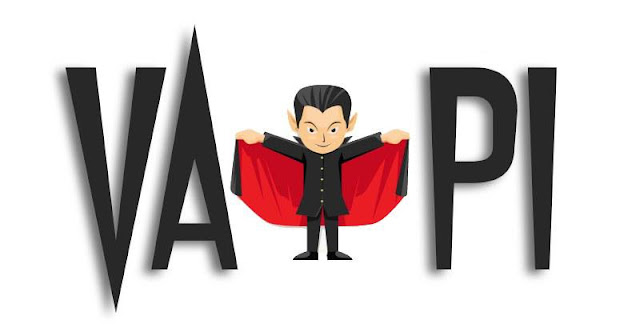[]()
**The Vulnerable API** _(Based on OpenAPI 3)_
VAmPI is a vulnerable API made with Flask and it includes [vulnerabilities]( “vulnerabilities” ) from the OWASP top 10 vulnerabilities for APIs. It was created as I wanted a vulnerable API to evaluate the efficiency of tools used to detect security issues in APIs. It includes a switch on/off to allow the API to be vulnerable or not while testing. This allows to cover better the cases for false positives/negatives. VAmPI can also be used for learning/teaching purposes. You can find a bit more details about the vulnerabilities in [erev0s.com]( “erev0s.com” ).
#### Features
* Based on [OWASP Top 10]( “OWASP Top 10” ) vulnerabilities for APIs.
* OpenAPI3 specs and Postman Collection included.
* Global switch on/off to have a vulnerable environment or not.
* Token-Based [Authentication]( “Authentication” ) (Adjust lifetime from within app.py)
VAmPI’s flow of actions is going like this: an unregistered user can see minimal information about the dummy users included in the API. A user can register and then login to be allowed using the token received during login to post a book. For a book posted the data accepted are the title and a secret about that book. Each book is unique for every user and only the owner of the book should be allowed to view the secret.
A quick rundown of the actions included can be seen in the following table:
**Action** | **Path** | **Details**
—|—|—
GET | /createdb | Creates and populates the database with dummy data
GET | / | VAmPI home
GET | /users/v1 | Displays all users with basic information
GET | /users/v1/_debug | Displays all details for all users
POST | /users/v1/register | Register new user
POST | /users/v1/login | Login to VAmPI
GET | /users/v1/{username} | Displays user by username
DELETE | /users/v1/{username} | Deletes user by username (Only Admins)
PUT | /users/v1/{username}/email | Update a single users email
PUT | /users/v1/{username}/password | Update users password
GET | /books/v1 | Retrieves all books
POST | /books/v1 | Add new book
GET | /books/v1/{book} | Retrieves book by title along with secret
For more details you can use a service like the [swagger editor]( “swagger editor” ) supplying it the OpenAPI specification which can be found in the directory `openapi_specs`.
#### List of Vulnerabilities
* SQLi Injection
* Unauthorized Password Change
* Broken Object Level Authorization
* Mass Assignment
* Excessive Data Exposure through debug endpoint
* User and Password Enumeration
* RegexDOS (Denial of Service)
* Lack of Resources & Rate Limiting
## Run it
It is a Flask application so in order to run it you can install all [requirements]( “requirements” ) and then run the `app.py`. To install all requirements simply run `pip3 install -r requirements.txt` and then `python3 app.py`.
Or if you prefer you can also run it through docker or docker compose.
#### Run it through Docker
**Build with**
docker build -t vampi_docker:latest .
**and Run** _(remove the -d if you want to see the output in your terminal)_
docker run -d -p 5000:5000 vampi_docker:latest
[Note: if you run Docker on newer versions of the MacOS, use `-p 5001:5000` to avoid conflicting with the AirPlay Receiver service. Alternatively, you could disable the AirPlay Receiver service in your System Preferences -> Sharing settings.]
#### Run it through Docker Compose
Assuming you’ve built the container per the above steps, run one instance securely (port 5001) and another insecurely (port 5002):
docker compose up -d
## Customizing token timeout and vulnerable environment or not
If you would like to alter the timeout of the token created after login or if you want to change the environment **not** to be vulnerable then you can use a few ways depending how you run the application.
* If you run it like normal with `python3 app.py` then all you have to do is edit the `alive` and `vuln` variables defined in the `app.py` itself. The `alive` variable is measured in seconds, so if you put `100`, then the token expires after 100 seconds. The `vuln` variable is like boolean, if you set it to `1` then the application is vulnerable, and if you set it to `0` the application is not vulnerable.
* If you run it through Docker, then you must either pass environment variables to the `docker run` command or edit the `Dockerfile` and rebuild.
* Docker run example: `docker run -d -e vulnerable=0 -e tokentimetolive=300 -p 5000:5000 vampire_docker:latest`
* One nice feature to running it this way is you can startup a 2nd container with `vulnerable=1` on a different port and flip easily between the two.
* In the Dockerfile you will find two environment variables being set, the `ENV vulnerable=1` and the `ENV tokentimetolive=60`. Feel free to change it before running the docker build command.
[Picture from freepik – www.freepik.com]( “Picture from freepik – www.freepik.com” )
**[Download VAmPI]( “Download VAmPI” )**Read More
References

Back to Main


